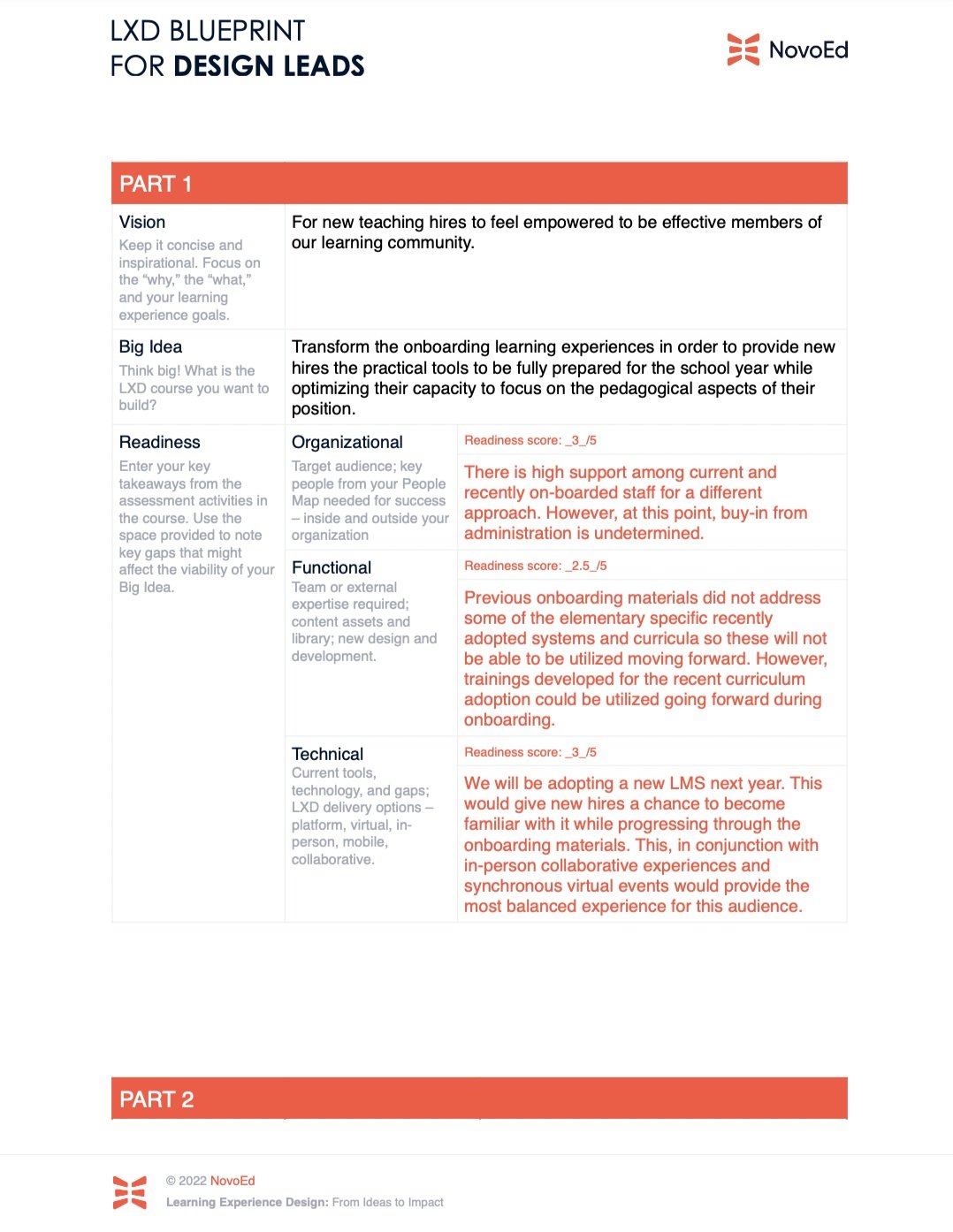So Glad You Are Here:
A Teacher’s Toolkit
“I define connection as the energy that exists between people when they are seen, valued, and heard.”
Vision: For new teacher hires to feel empowered to be effective members of our learning community.
Audience: Elementary Teachers New to the District
Responsibilities: Needs Analysis, Stakeholder Engagement, Instructional Design, Visual Design, eLearning Development
KPI: Increase employee retention by 10% year over year.
Problem
Teachers new to the district are overwhelmed by the current onboarding experience, leaving them feeling unsupported and ill-equipped for the school year.
Solution
A course of 4 hybrid modules over a two-week span that…
1) empowers teachers with training and transparency 2) connects them to their school and their supports, and 3) honors their expertise and voice in community.
My Process
Needs Analysis
Using past survey data, I determined that staff did not feel like they had the necessary resources to do their job well. In addition, only half of staff felt empowered to play a meaningful role in decision-making at their school. Qualitative data showed that new teachers especially were feeling overwhelmed and isolated. Based on this needs analysis, I began to reimagine an onboarding experience that would address these gaps, reduce burnout, increase collective efficacy and ultimately result in higher retention of new teachers.
Vision
To begin, I used the ‘whiteboarding’ process to develop the WHAT and the WHY of this initiative. In alignment with the survey data, I chose three areas of focus: empowering teachers, connecting them with their supports, and valuing the funds of knowledge that they bring to the table. This process helped me to ground my work and got me really excited about the impact this approach could have on teachers’ experiences within the district.
Course Outline
Beginning with my course objectives, I began to create a course outline. I carefully chose a course title that was welcoming and personal. Understanding learner variability, I determined that the modules would be a variety of in-person, synchronous and asynchronous modalities. To address established as well as recently adopted practices, I identified which course content would pulled from existing resources, and which content would be newly created or curated resources.
Next Steps
By identifying stakeholders and assessing their readiness levels, I recognized that I had to build a strong argument to upper management in order to effectively implement this change. Therefore, I created an elevator pitch detailing the critical need and the lasting benefits that would come from adopting this approach. Finally, I developed a timeline for next steps to be taken in order to successfully complete the project.
Development
Once I had my outline, I began to breakdown the learning objectives into modules, modalities and experiences, identifying the resources needed for each. Given that new hires have so little time to dedicate to new training, I focused on insuring that each experience had a practical outcome that could be implemented and used throughout the school year. For example, for the third module, Curriculum, I wanted teachers to walk away with weekly and yearly planning templates that were reflective of daily schedules, report card deadlines and other milestones within the district. This would give them a head start on planning and provide a practical tool that could be used to contribute to their efficacy throughout the school year.
Challenges
One of the challenges I faced was insuring that these onboarding experiences were providing a balance of practical information along with opportunities for connection and conversation during what is inevitably a stressful time for new hires. Coming back to the WHAT and the WHY of this course, I decided that module two (Who’s Who) would be entirely in-person. The module would be devoted to aiding new hires in building relationships with their fellow staff members and connecting them with a designated mentor/coach. This aligned with the overall course outcome of ‘connecting new hires to their community and their supports.’
“Conversation is the way that humans have always thought together.”








